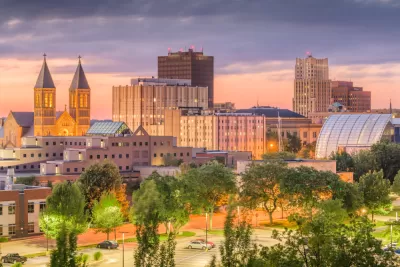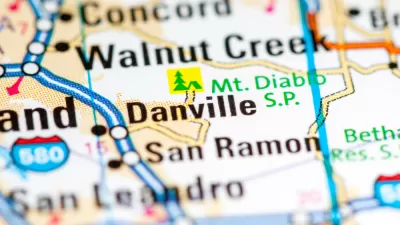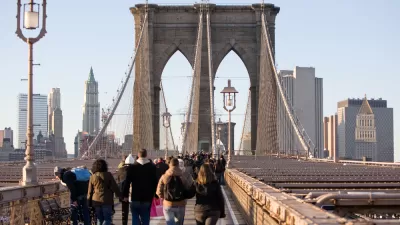Following the success of Planning to Grow Akron, spurring the development of thousands of housing units in the previously stagnant city, Planning to Grow Akron 2.0 will leverage federal stimulus funds to further stabilize the city's housing market.

Akron Mayor Dan Horrigan announced a new housing strategy, called Planning to Grow Akron 2.0, this week, reports Doug Livingston.
"Planning to Grow Akron 2.0 — an update on the first version from 2017 — promises a lot: better housing code enforcement, stiffer fines for absentee landlords, smoother zoning and permitting processes, a landlord-tenant council, a comprehensive strategy for homelessness by 2022, and a ranking by condition of all 84,000 residential structures in the city."
"Central to the plan, though, is a commitment to revitalize housing in what post-industrial, Midwestern cities like Akron are calling 'middle neighborhoods,'" adds Livingston.
Mayor Horrigan is proposing an expenditure of $20 million, a portion of the $153 million awarded the city through the American Rescue Act, to go toward housing in the city.
According to the article, the Planning to Grow Akron 2.0 plan is the second major housing initiative proposed by Mayor Horrigan. The first Planning to Grow Akron plan "exempted property taxes for new residential construction anywhere in the city for 15 years. Developers have since pounced on these residential tax abatements, which couldn’t be more aggressively structured under Ohio law."
According to an analysis included in this week's updated housing strategy, the effect of the first Planning to Grow Akron plan has been tremendous: "Before Horrigan took office, Akron was averaging less than 20 new home permits a year. There are now 1,800 housing units being planned, under construction or completed."
FULL STORY: Updated housing strategy goes after bad landlords, focuses on struggling neighborhoods

Planetizen Federal Action Tracker
A weekly monitor of how Trump’s orders and actions are impacting planners and planning in America.

Maui's Vacation Rental Debate Turns Ugly
Verbal attacks, misinformation campaigns and fistfights plague a high-stakes debate to convert thousands of vacation rentals into long-term housing.

San Francisco Suspends Traffic Calming Amidst Record Deaths
Citing “a challenging fiscal landscape,” the city will cease the program on the heels of 42 traffic deaths, including 24 pedestrians.

Amtrak Rolls Out New Orleans to Alabama “Mardi Gras” Train
The new service will operate morning and evening departures between Mobile and New Orleans.

The Subversive Car-Free Guide to Trump's Great American Road Trip
Car-free ways to access Chicagoland’s best tourist attractions.

San Antonio and Austin are Fusing Into one Massive Megaregion
The region spanning the two central Texas cities is growing fast, posing challenges for local infrastructure and water supplies.
Urban Design for Planners 1: Software Tools
This six-course series explores essential urban design concepts using open source software and equips planners with the tools they need to participate fully in the urban design process.
Planning for Universal Design
Learn the tools for implementing Universal Design in planning regulations.
Heyer Gruel & Associates PA
JM Goldson LLC
Custer County Colorado
City of Camden Redevelopment Agency
City of Astoria
Transportation Research & Education Center (TREC) at Portland State University
Jefferson Parish Government
Camden Redevelopment Agency
City of Claremont





























